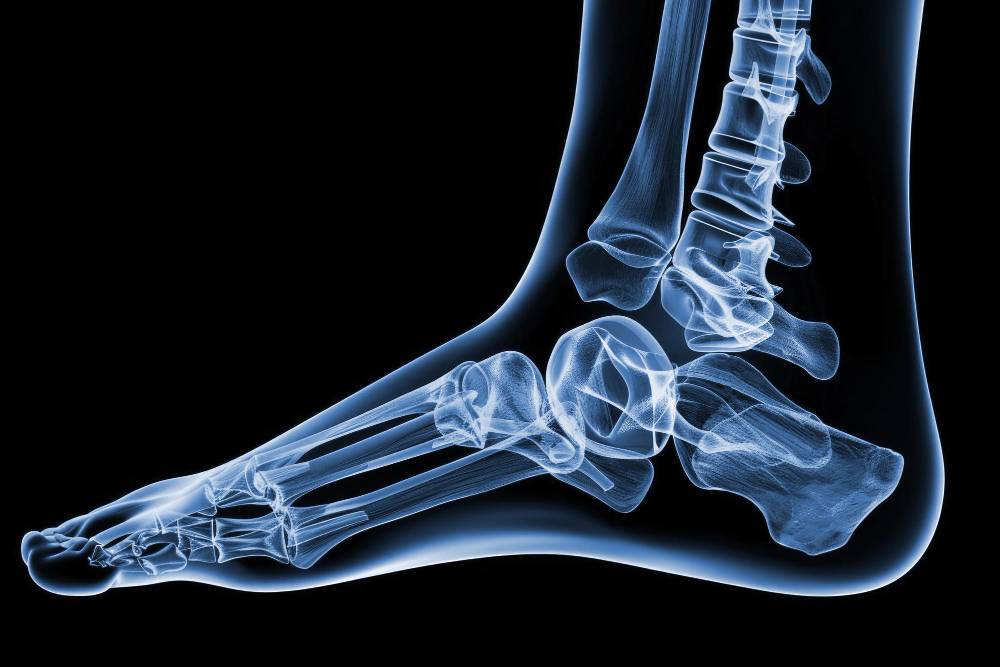Menu

With 26 bones, 33 joints, and a complex network of muscles, tendons, and ligaments, the foot and ankle are marvels of human biology designed to support our weight, allow for movement, and adapt to various surfaces. Understanding the anatomy of the ankle is crucial not just for passing a biology class, but for maintaining foot health and mobility throughout life.

In this brief article brought to you by Mid Penn Foot & Ankle Specialists, we go over the basics of ankle anatomy and highlight why understanding this matters. If you’d rather consult with a licensed podiatrist, then call Mid Penn Foot & Ankle Specialists to speak with a member of our team.
We can break down the basics of ankle anatomy into three sections: the bones, the joints, and the muscles, tendons, and ligaments. Let’s start with the bones.
The ankle joint connects the leg to the foot and is primarily composed of three bones, which are the tibia, fibula, and talus:
We are committed to providing personalized, compassionate care for everyone who walks through our doors. If you’re ready to schedule an appointment with one of our doctors, give us a call or visit one of our locations today.
BOOK AN APPOINTMENTConnecting the bones of the body are the joints. The main joint in the ankle is the talocrural joint, where the tibia and fibula meet the talus. This hinge joint allows for up-and-down movements of the foot, such as pointing the toes (plantarflexion) and lifting them towards the shin (dorsiflexion).
The subtalar joint, located below the talus and between the talus and calcaneus, allows for side-to-side movements, such as tilting the sole of the foot inward (inversion) and outward (eversion).
Several muscles control the movements of the ankle and foot. Key muscles include the gastrocnemius and soleus (calf muscles) which enable plantarflexion, and the anterior tibialis, which facilitates dorsiflexion.
Tendons connect muscles to bones. The Achilles tendon, the largest tendon in the body, connects the calf muscles to the heel bone and is vital for walking, running, and jumping.
Ligaments are tough bands of tissue that connect bones to other bones. The deltoid ligament on the inner side and the lateral ligaments on the outer side of the ankle provide stability and prevent excessive movement that could lead to injuries.
Perhaps the most important is that understanding ankle anatomy helps in recognizing the signs of common injuries and knowing how to prevent them. Ankle sprains, for instance, are one of the most frequent injuries, often resulting from overstretched or torn ligaments. Knowing the role of ligaments can help in appreciating the importance of strengthening exercises and wearing proper footwear to provide adequate support.
For athletes, understanding of ankle anatomy can be the difference between peak performance and injury. Proper conditioning of the muscles and tendons around the ankle can improve agility, balance, and strength, thereby enhancing overall athletic ability. Tailored training programs that focus on these aspects can lead to better performance and fewer injuries.
Even for non-athletes, healthy ankles are essential for daily activities like walking, climbing stairs, and standing for long periods. Awareness of how the ankle works can encourage individuals to take proactive steps in maintaining ankle health, such as engaging in regular exercise, maintaining a healthy weight, and avoiding activities that put undue stress on the ankle joint.
It’s not enough to understand the basics of ankle anatomy. If you are concerned about your feet and ankles, then make sure to consult with a licensed foot doctor.
If you’d like to schedule an appointment with a foot specialist, then consider Mid Penn Foot & Ankle Specialists. Our healthcare professionals are proud to offer everything from routine foot care to diagnoses and treatments, including conservative solutions and surgical interventions.
From the moment we step out of bed in the morning to the last stroll around the house…
Read MorePregnancy is an incredible journey, but let’s be real: it’s also tough on your body. From morning sickness…
Read MoreOur bodies are an intricate network of bones, muscles, tendons, and ligaments working together…
Read More